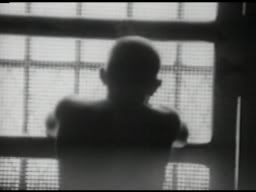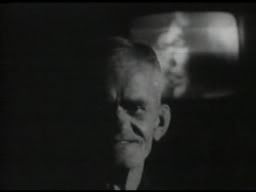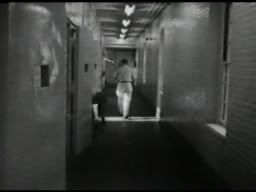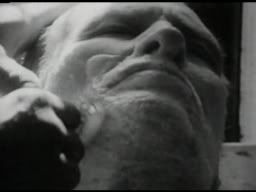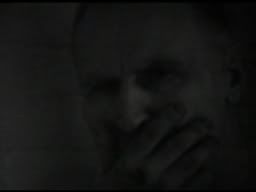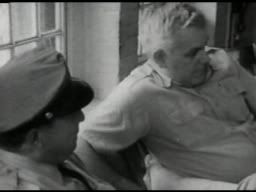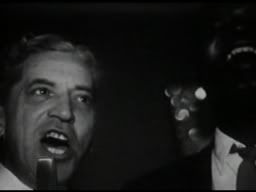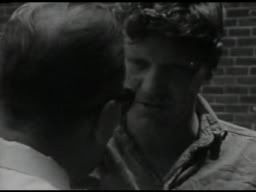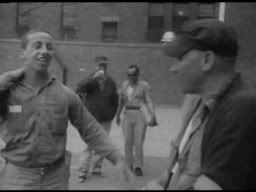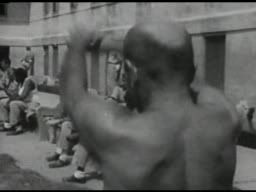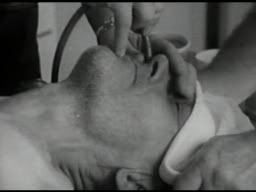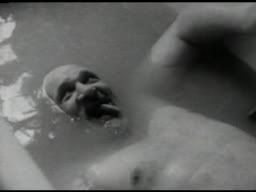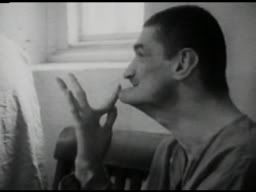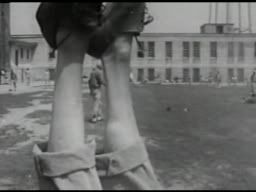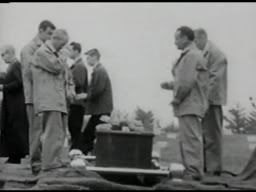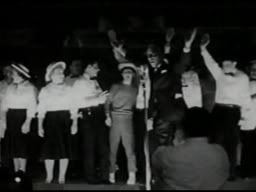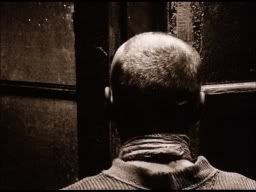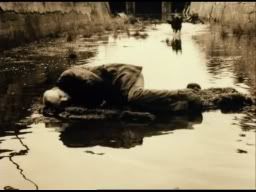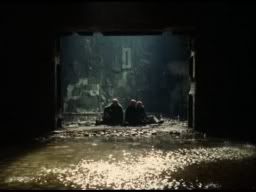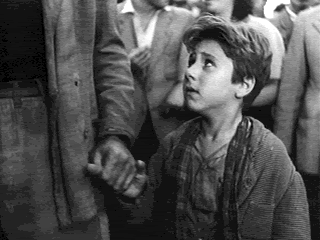
Vittorio de Sica's Ladri di Biciclette, one of the founding stones of Italian neorealism, is the story of one man's desperate search for a stolen bicycle against the backdrop of post-war Italy. The bicycle, a vehicle for multiple meanings in the film, stands as a motif for Antonio's paternal dignity and his faith in the structures of the society. The loss of this symbol disrupts the idyllic father-son relationship and lowers Antonio's image in Bruno's eyes. The abortive search for the bicycle also unravels the indifference or futility of social systems like the police, unions, the church and the occult. Despite his father's dehumanizing circumstances Bruno comes of age and acquires a mature and compassionate understanding of his father's plight against his odds.
In a post-war Italy sundered between the haves and have-nots, Antonio's dignity as a human and head of the family pivots upon his bicycle. Before Antonio reclaims it from the pawn-shop, de Sica shows little family dynamics that can establish him as the head of the family. However after the return of the bicycle, Bruno is first introduced through its wheels, dramatizing Antonio's influence on him. The fact that the bicycle finally permits Antonio to find work elevates him in Bruno's eyes, who probably was the only earner in the family till then. On the first day of work Antonio is the cynosure of the family's attention: Maria repairs his cap and fixes lunch, while Bruno cleans his bicycle religiously. In different sequences Antonio carries his wife and son on the bike's bar, reinforcing his position as husband and father. In the latter sequence, de Sica shifts from short and medium to long shots that trace father and son's journey through the wider parts of the city. Compared to the narrow alleyways and looming architecture that frame the search for the lost bicycle, this particular sequence of Antonio pedaling Bruno to the gas-station visually frees the characters from their entrapment by the city. These subtle interactions set off by the bicycle establish Antonio as the head of the family in whom Maria and Bruno have tremendously invested their spirit and hopes.
The theft of the bicycle thus quells Bruno's spirit and effectively disrupts the family, depicted by the evolution of the father-son relationship. At the beginning of the film, Antonio's concern about the bicycle emerges through his inattentiveness towards his wife's struggle with the two buckets of water. Their interaction brilliantly portrays the realism of the sequence, yet sets the stage for Antonio's careless attitude towards his son during the search for the bicycle. After the theft of the bicycle Maria disappears from the picture, thus dramatizing how Antonio's obsessive search takes precedence over his family.
The dark maw of a tunnel is used in two scenes of great urgency: when Antonio chases the bicycle thief on the first day of work, and when he runs to the river's bank anxious about Bruno's wellbeing. This device draws parallels between the importance of Bruno and the bicycle in his life. Bruno is the constant reminder of Antonio's ties to his family and his own humanity along the search. Antonio's actions are unconsciously scrutinized with respect to his elevated image in his son's mind, dramatized by the camera showing Bruno's wide gaze looking up intermittently at his father. Thus Bruno verily embodies Antonio's conscience, his last ties to humanity his family in an indifferent world. This important dimension of Antonio's life is undermined by his impossible quest for the bicycle.
During the search Bruno takes brisk steps to keep up with his extremely anxious father. Antonio is oblivious when Bruno slips on the pavement and almost gets run over twice. In his hurry to track down the old man near the second market, Antonio even unwittingly prevents his son from relieving himself. Antonio's frustration culminates in him slapping Bruno for an innocent comment outside the church. Bruno refuses to look up and make eye-contact with his father; he walks some distance away from Antonio at a slower pace. Contrasted with his previous dynamics with his father, it is clear that the search for the bicycle begins to cost them their special bonding. In the beginning of the film Antonio, at the brink of breakdown, says I feel like jumping into the river . This hauntingly revisits him when he fears of Bruno drowning in the river. The dread of his son's death forms a subtle metaphor for the spiritual death of his family life and his own humanity. Thus, the loss of the bike effectively removes Antonio from his family and rents his important relationship with Bruno.
In addition, the 'Fides' bicycle, its brand-name translating to 'faith', is a motif of Antonio's faith in his ability to find work and in the existing social systems. Firstly it forms an integral part of the worker's uniform, symbolized when Antonio looks into the mirror with the bicycle on his shoulder. After he loses the bicycle Antonio is ultimately forced into the realization that he will possibly never reclaim the postering job. Similarly he is taken through a series of social structures only to be turned down by each.
The police belittle the magnitude of Antonio's problem by dismissing it as only a bicycle . De Sica portrays the disappointment of Antonio's hopes through the mise-en-scene technique of close-ups of the face. The policemen summoned during the search also prove to be futile, due to the formalities standing in the way of apprehending the thief. Antonio can do little but plead If you only knew what this means to me . After being refused by the police, he ventures to an communist meeting a meeting of people whose cause is the welfare of the proletariat. Ironically, the speaker has no time for the individual's plight, rudely addressing Antonio to be quiet. He is finally offered help by three garbagemen. However, after a futile day at the bicycle market, it is clear that well-meaning yet powerless friends cannot pull an individual out of his odds.
The church, another institution, is portrayed as attracting the city's poor with the promise of a meal after prayers. They are shaved and lured by food in a way that is demeaning to their humanity. The prayer formalities are clearly of much more importance than Antonio's need to find the old man. The church wardens disrupt Antonio's search at every stage, while the holy place - as read out in the sermon - itself gives sanctuary to the old man who was a possible partner in the crime. Echoing the communist speaker, a church warden tells Antonio, Silence or I'll have you thrown out . The internal criticism of religion in general is continued when a group of clerics join Antonio and Bruno under the shed, their annoying chatter at stark contrast with Antonio's somber desperation. After the aborted search in the church, Antonio visits an occultist as a last resort, symbolized by the woman in the soothsayer's house directing him to the last door. As Antonio waits for his turn, the soothsayer predicts a man's unchangeable future: You plant and nothing grows . Similarly, even in Antonio's case her predictions come true but Antonio is unable to use her help to reclaim the bicycle. The loss of the bike thus crushes Antonio's faith in the various systems kept in place to help those in need of it.
De Sica individuates Antonio's loss of faith through the use of the city's teeming masses and bicycles. Through long shots de Sica establishes the vast numbers of bicycles owned by Antonio's fellow townsmen, thus underscoring the individual case of his misfortune. Similarly, while Antonio feels cornered by his helplessness, hundreds of others can be heard cheering at the soccer game. At this moment when he is at the dizzying height of despair, the streets are curiously empty under a torrid sun. This dramatization of the individual's plight against an indifferent society helps to capture the poignancy and individual texture of Antonio and Bruno's experiences.
Yet Ladri di Biciclette is ultimately a great social commentary and a window into the general disrepair in post-war Italy. The bicycle stands as a symbol of faith not only for our unfortunate posterer but as the desperation of a people held captive by unemployment. The plural subject of the original title alludes to this universality. The vertically panning shot in the pawn-shop's warehouse captures immense numbers of hocked sheets, a tremendous visual statement on the countless families that are forced to Antonio's desperate measures. The thief's squalid home shows that he is driven by the same motivations as Antonio. This universality of the proletariat's travails is extended further through subjective aspects of the camera. During the title sequence, the camera slowly shifts to capture the point-of-view of one of the unemployed men in the gathering. Thus the viewer is drawn in as an almost active observer of the drama. In addition when Antonio and his union friends walk through the first market in search of his bicycle, tracking shots of different bicycles lend subjectivity to the camera, extending Antonio's tenseness to the viewer.
Despite the themes of loss that the search revolves around, Antonio's tremendous misfortune fuels Bruno's coming-of-age and the transition of the father-son relationship to the next level. Bruno emerges as a very helpful partner in the search. He identifies the old man in the second bicycle market. He aggressively cuts in line at the soothsayer's house feeling the urgency of the search. When the thief's neighbors turn against Antonio, Bruno judiciously calls a police and prevents his father from getting beaten up. Most importantly, after Antonio is caught after his aborted attempt at theft, the owner of the bicycle looks down at Bruno's anxious face and decides not to hand over Antonio to the police. Thus, the search breaks down Bruno's larger-than-life image of his father and drives him to a maturity beyond his years. His childish concept of his father is fully shattered when with bewildered eyes he witnesses Antonio stealing a bicycle and being slapped by a crowd. It is Bruno's presence that overwhelms Antonio with shame, dramatized by a tracking point-of-view shot of Bruno's shocked face as Antonio bikes past. In this defining moment Bruno relinquishes his worshipful image of his father. Recognizing him as only a human in dehumanizing circumstances, Bruno extends a hand to him - a hand not of a child but that of an understanding adult.
"De Sica and Zavattini are concerned to make cinema the asymptote of reality--but in order that it should ultimately be life itself that becomes spectacle...."- Andre Bazin on Umberto D (de Sica) in "Umberto D: A Great Work" from What is Cinema? Vol. II, p. 82
By the end of Ladri di Biciclette, the viewer is forced to reevaluate Antonio's spirited declaration: There is a cure for everything, but death . The misfortune that befalls them due to the loss of the bicycle is nothing less than spiritual death. As the crying father and son merge into the waves of humanity de Sica's grittily realism, echoing Bazin's comment, closes the simple tale of poverty in an unforgettable snapshot of the human condition.



